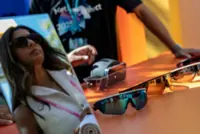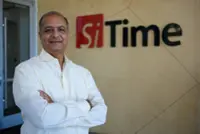The VSD system for deaf track and field athletes made its debut at the Malaysia Deaf Games (SOPMA XX) in Perak in 2018. — Photos: JAYSUMAN PUSPPANATHAN
The role of tech to aid deaf sportsmen on track and field was something that came to Dr Jaysuman Pusppanathan’s attention a few years ago.
Jaysuman, the deputy director of the Sports Innovation and Technology Centre (SiTC) at the Institute of Human Centered Engineering at Universiti Teknologi Malaysia in Johor, was made aware of how deaf athletes would often stumble at the starting line because they could not hear the starter gun.





